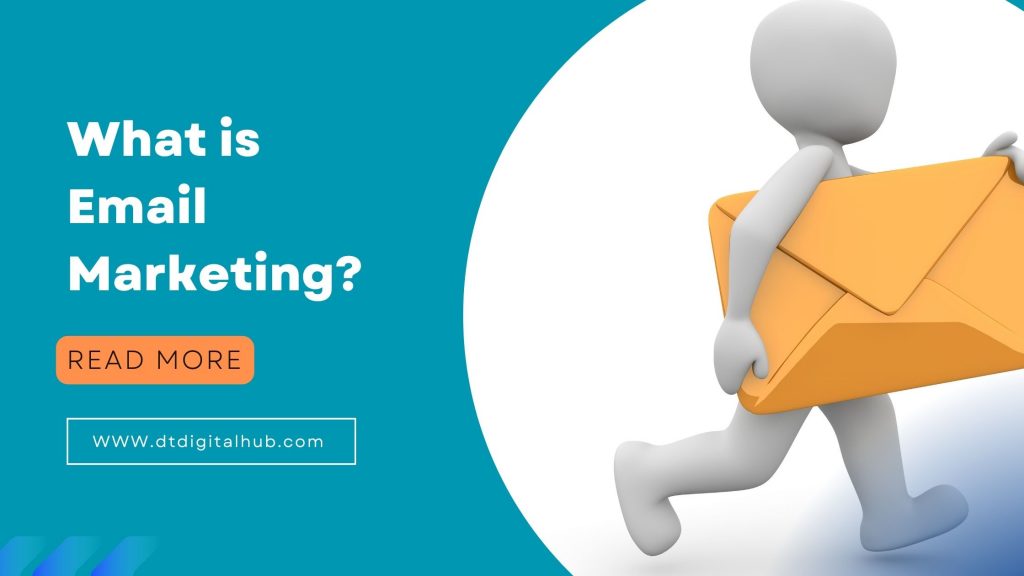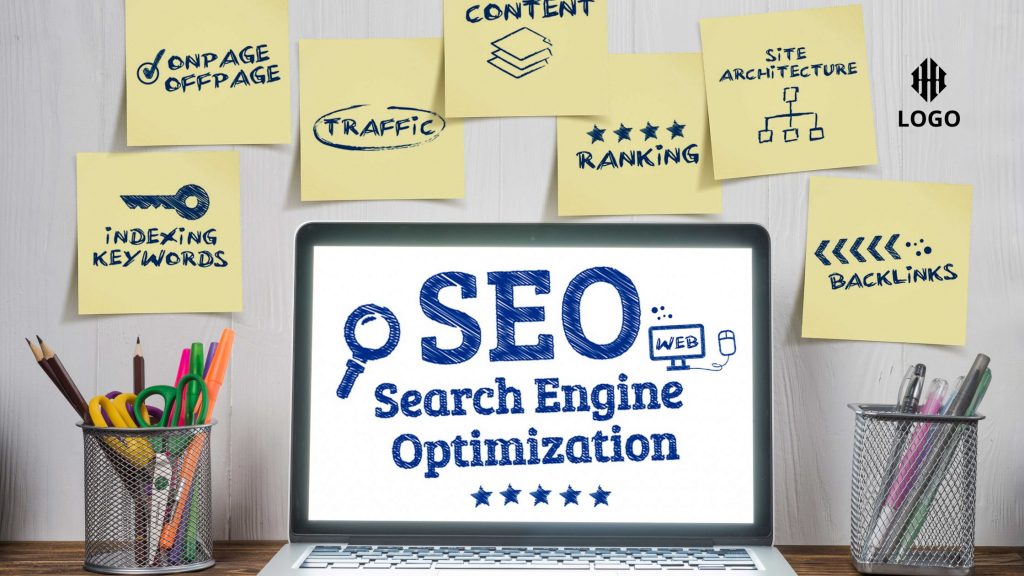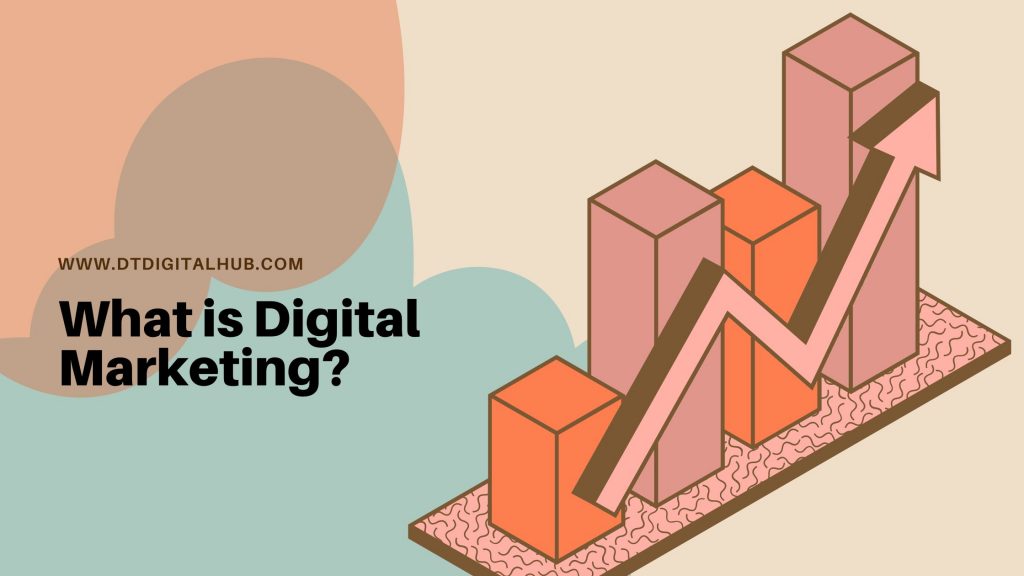In today’s digital age, email marketing has become an essential tool for businesses of all sizes. It’s a cost-effective way to communicate with your audience and build relationships with your customers. But what is email marketing, and how does it work?
Email marketing is the process of sending commercial messages to a group of people through email. The goal of email marketing is to build loyalty, trust, and brand awareness while promoting your products and services.
In this article, we’ll explore what email marketing is, how it works, and the benefits of using it, and more for your business.
What is Email Marketing?
Email marketing is a type of digital marketing that involves sending commercial messages to a group of people through email. These messages can include promotional offers, newsletters, updates, and more.
The purpose of email marketing is to build relationships with your customers, increase brand awareness, and ultimately drive sales.
How Does Email Marketing Work?
Email marketing works by building a list of email subscribers who have opted-in to receive your messages. This can be done through a variety of methods, such as offering a free lead magnet or asking customers to sign up for your newsletter.
Once you have a list of subscribers, you can start sending them emails. The content of your emails can vary, but should always be valuable and relevant to your audience. This can include promotions, news, updates, and more.
The key to successful email marketing is to provide value to your subscribers while also promoting your products or services. This can help build trust and loyalty with your audience, which can ultimately lead to more sales.
Email Marketing Types and Examples
There are several types of email marketing campaigns. Some of the most common types of email marketing include:
- Newsletters: A regularly scheduled email that is sent to subscribers to keep them informed about company news, promotions, or industry trends.
- Promotional emails: These emails are focused on promoting a specific product or service, usually with a time-sensitive offer to create urgency.
- Abandoned cart emails: These emails are sent to users who have abandoned their shopping cart without completing their purchase, often including a special offer to encourage them to complete the purchase.
- Welcome emails: These emails are sent to new subscribers to introduce them to the company, provide information about what they can expect from the company, and encourage them to engage with the brand.
- Triggered emails: These are automated emails that are sent based on specific user actions, such as a welcome email or an abandoned cart email.
- Re-engagement emails: These emails are designed to re-engage subscribers who have stopped engaging with the brand or have stopped opening emails.
History of Email
Email, which stands for “electronic mail,” was invented in the early 1970s. The first email system was developed by a computer engineer named Ray Tomlinson in 1971. He is credited with inventing the @ symbol, which he used to separate the user’s name from the name of their computer or network. The first email message was sent between two computers that were sitting next to each other. Over the next few years, email became a popular way for computer scientists and researchers to communicate with each other.
In the 1980s, email started to become more widely used as personal computers became more common. The first email programs for personal computers were developed, and by the end of the decade, email was a standard feature of most office software suites. In the 1990s, the development of the World Wide Web and the rise of the internet made email even more popular. Email became the primary way for people to communicate online, and it remains one of the most popular ways to communicate today.
Advantages of Email Marketing
There are several advantages of email marketing, including:
- Cost-effective: Email marketing is one of the most cost-effective marketing channels as it doesn’t require a huge budget to get started.
- Personalization: Email allows you to personalize your messages and tailor them to specific audiences, which can help you build a stronger connection with your subscribers.
- Targeted: Email marketing allows you to segment your list and target specific subscribers with relevant content, which can improve your open rates and engagement.
- Measurable: Email marketing platforms provide detailed analytics that allow you to measure the effectiveness of your campaigns and make data-driven decisions to optimize them.
- Scalable: Email marketing allows you to reach a large audience with just a few clicks, making it a scalable marketing channel.
- Easy to automate: You can automate your email marketing campaigns, which saves you time and allows you to focus on other important aspects of your business.
- High ROI: Email marketing has a high ROI compared to other marketing channels. Studies have shown that for every $1 spent on email marketing, the average return is $42.
Overall, email marketing can be a powerful tool for businesses of all sizes, helping them build relationships with their customers, increase engagement, and drive sales.
Disadvantages of Email Marketing
While email marketing has many benefits, there are also several potential drawbacks to consider:
- Spam: Email marketing can be seen as spam by recipients who did not sign up for the mailing list, causing a negative impact on the brand.
- Deliverability Issues: Email providers may flag certain emails as spam or junk mail, making them less likely to reach the recipient’s inbox.
- Unsubscribes: Uninterested recipients may opt-out of future emails or mark emails as spam, leading to a decrease in the number of people receiving your emails.
- Time-Consuming: Email marketing campaigns require time and effort to plan, create, and send.
- Legal Requirements: Depending on the location of the recipients, there may be legal requirements for sending marketing emails, such as including an opt-out option.
- Design Constraints: Emails have design limitations, and it can be difficult to create an attractive, engaging email that works across multiple devices and email clients.
- Limited Personalization: Email marketing may lack personalization when compared to other forms of marketing, such as social media.
How to Do Email Marketing?
Email marketing involves creating and sending promotional emails to a targeted list of subscribers to promote your products or services. Here are the steps to do email marketing:
- Define your target audience: Identify the people you want to reach with your email marketing campaign, and build a targeted list of subscribers.
- Choose an email marketing platform: Select an email marketing service provider that fits your budget and needs. Popular email marketing tools include Mailchimp, Constant Contact, and AWeber.
- Create an email marketing campaign: Create an email marketing campaign that is engaging, informative, and relevant to your target audience. Include a clear call-to-action in your email to encourage subscribers to take action.
- Personalize your email: Personalize your email marketing message to make it more engaging and relevant to your subscribers.
- Test your email: Before sending your email to your list, test it to ensure it is visually appealing, loads quickly, and is free of errors.
- Send your email: Once you have finalized your email, send it to your list of subscribers.
- Track and analyze your results: Monitor your email campaign metrics, such as open rates and click-through rates, to assess the performance of your email marketing campaign and optimize future campaigns.
Tips for building your Email Marketing list
Building an email marketing list can take time and effort, but there are a few tips you can follow to ensure you’re building a high-quality list of engaged subscribers. Here are some tips for building an email marketing list:
- Make it easy to sign up: Place sign-up forms in prominent locations on your website, social media profiles, and other online channels. Make sure the forms are easy to fill out and the benefits of subscribing are clear.
- Offer incentives: Give people a reason to sign up by offering an incentive like a free e-book, discount code, or exclusive content.
- Use social media: Use your social media channels to promote your email list and drive traffic to your sign-up forms.
- Host events: If you’re hosting an event or speaking at a conference, provide a sign-up sheet or offer attendees the chance to sign up for your email list.
- Leverage offline channels: Collect email addresses in person or through direct mail campaigns.
- Make it clear what subscribers can expect: Set expectations for your email frequency and the type of content you’ll be sending so subscribers know what they’re signing up for.
- Send a welcome email: Send a welcome email to new subscribers thanking them for signing up and providing an overview of what they can expect from your emails.
- Use a double opt-in: Use a double opt-in process to confirm that subscribers want to receive emails from you.
Remember that it’s important to focus on quality over quantity when building your email marketing list. You want engaged subscribers who are interested in what you have to offer and are more likely to take action based on your emails.
What is Email Marketing Automation?
Email marketing automation refers to the process of using software to automate email marketing tasks, such as sending personalized and targeted messages to subscribers based on their actions or behavior. Email marketing automation tools allow marketers to create a series of emails or triggers that are automatically sent to subscribers based on specific criteria, such as signing up for a newsletter, making a purchase, or abandoning a shopping cart.
Automation can help streamline and optimize email marketing campaigns, allowing marketers to create more targeted and personalized messages, reduce manual efforts, and improve overall efficiency. By using automation, marketers can ensure that the right message is sent to the right person at the right time, leading to higher engagement rates and conversions.
What is Email Marketing Software?
Email marketing software is a tool that enables businesses to create, send, and track email campaigns. It typically includes features for email design, list management, campaign tracking and reporting, and automation. The software allows businesses to create targeted and personalized email campaigns that can be delivered to a specific list of subscribers. Some popular email marketing software options include Mailchimp, Constant Contact, HubSpot, Campaign Monitor, and ConvertKit.
List of Email Marketing Tools and Software
There are many email marketing tools and software available in the market. Here are some of the most popular ones:
- Mailchimp: Mailchimp is one of the most popular email marketing platforms. It offers a variety of features and integrations, including marketing automation, landing pages, and more.
- Constant Contact: Constant Contact is an email marketing software that allows businesses to create and send professional-looking emails to their subscribers.
- Campaign Monitor: Campaign Monitor is a powerful email marketing platform that includes a variety of features like personalization, automation, and analytics.
- AWeber: AWeber is a popular email marketing software that allows businesses to create and send emails, manage subscribers, and more.
- GetResponse: GetResponse is an all-in-one marketing platform that includes email marketing, landing pages, webinars, and more.
- HubSpot: HubSpot is an inbound marketing platform that includes email marketing, lead generation, customer relationship management (CRM), and more.
- Sendinblue: Sendinblue is an email marketing platform that includes features like marketing automation, transactional emails, and more.
- ConvertKit: ConvertKit is an email marketing platform that is designed specifically for bloggers and content creators.
- Drip: Drip is an email marketing automation platform that includes features like segmentation, automation, and more.
- ActiveCampaign: ActiveCampaign is an all-in-one marketing platform that includes email marketing, marketing automation, CRM, and more.
These are just a few of the many email marketing tools and software available in the market. When choosing an email marketing platform, it’s important to consider your specific needs and goals.
What is Email Marketing Campaign?
An email marketing campaign is a coordinated set of email messages that are sent to a targeted group of recipients to achieve specific goals, such as increasing brand awareness, promoting products or services, driving traffic to a website, or generating sales. The campaign typically involves a series of email messages sent over a period of time, with each message designed to move the recipient further down the sales funnel or to deepen their engagement with the brand. A successful email marketing campaign typically involves creating valuable and relevant content, segmenting the audience, optimizing the email design, and measuring and analyzing results to improve future campaigns.
How to choose an Email Service Provider?
When choosing an email service provider (ESP), here are some key factors to consider:
- Features and capabilities: Look for an ESP that offers the features and capabilities that are important to your business, such as email automation, segmentation, A/B testing, and integrations with other tools.
- Ease of use: Choose an ESP that is easy to use and intuitive, with a user-friendly interface and clear instructions.
- Deliverability: Ensure that the ESP has a good reputation for deliverability and email authentication, so that your emails are less likely to end up in spam folders.
- Pricing: Consider the cost of the ESP and whether it fits within your budget. Some ESPs charge per email sent, while others have a monthly or annual subscription fee.
- Customer support: Look for an ESP that offers good customer support, such as email, phone, or chat support, as well as helpful resources like tutorials, documentation, and a knowledge base.
- Integration: Check whether the ESP can integrate with the other tools and platforms you use, such as your CRM, e-commerce platform, or marketing automation software.
- Scalability: Consider whether the ESP can grow with your business and meet your future needs as you scale.
How much does Email Marketing cost?
The cost of email marketing can vary depending on several factors, such as the size of your email list, the frequency of your email campaigns, the level of personalization and automation you want to achieve, and the email marketing software or service provider you choose.
There are some email marketing tools and services that offer a free plan with limited features and a limited number of subscribers, while others offer paid plans that can range from around $10 to $500 or more per month, depending on the size of your email list and the features you need.
In addition to the cost of the email marketing service, you may also need to consider the cost of creating and designing your email campaigns, as well as any additional costs such as email verification or list cleaning services.
How to write a Marketing Email?
The best time to send a marketing email can vary depending on the target audience, industry, and type of email being sent. However, there are some general best practices to follow:
- Mid-week: Tuesday, Wednesday, and Thursday tend to be the best days to send marketing emails as people are less likely to be on vacation or have heavy workloads.
- Mid-morning: Late morning, between 10 am and 11 am, tends to be the best time to send marketing emails as people have finished checking their email and are taking a break before lunch.
- Test and adjust: The best way to determine the optimal time for your email marketing campaigns is to test and analyze the results. Try sending emails at different times and days of the week, and track the open and click-through rates to determine which times and days work best for your audience.
Ultimately, the best time to send a marketing email will depend on your specific audience and the content of your email. Therefore, it is important to monitor your email metrics and adjust your strategy accordingly.
Strategies for Email Marketing Success
Here are some strategies for email marketing success:
- Know your audience: Your email content should be tailored to the interests and needs of your target audience.
- Personalization: Personalize your email content and subject lines to make them more engaging to the reader.
- Clear and concise subject lines: Make sure your subject line is clear, concise, and attention-grabbing. Avoid spammy language or all caps.
- Timing: Test different send times to determine when your audience is most likely to engage with your email.
- Mobile optimization: Make sure your emails are optimized for mobile devices, as many people read their emails on smartphones or tablets.
- Call to action: Include a clear call to action in your emails to encourage subscribers to take action.
- A/B testing: Test different email formats, subject lines, and content to see what works best with your audience.
- Segment your list: Segmenting your email list based on subscriber behavior, interests, and demographics can help you send more targeted messages.
- Provide value: Make sure your email content provides value to your subscribers, whether it’s educational content, exclusive promotions, or helpful tips.
- Optimize your email list: Keep your email list clean by regularly removing inactive subscribers or those who have marked your emails as spam.
Why Email Marketing Is Important?
Email marketing is important for several reasons:
- Builds relationships with customers: Email marketing is an effective way to stay in touch with your customers and build strong relationships with them. By sending relevant and personalized content, you can keep your brand top of mind, and establish a rapport with your subscribers.
- Increases engagement: Email marketing can increase engagement with your target audience, leading to increased traffic, sales, and revenue. By sending emails that are tailored to your subscribers’ interests and needs, you can encourage them to take action and engage with your brand.
- Boosts brand awareness: Email marketing can help you increase brand awareness by getting your message in front of a wider audience. By creating engaging and informative emails, you can attract new subscribers and turn them into loyal customers.
- Drives traffic and sales: Email marketing is a great way to drive traffic to your website and generate sales. By promoting your products or services in your emails, you can encourage your subscribers to visit your site and make a purchase.
- Provides measurable results: Email marketing provides measurable results, allowing you to track open rates, click-through rates, and other metrics. This helps you optimize your campaigns and improve your ROI over time.
Email Marketing FAQs:
Is email marketing still effective in 2023?
Yes, email marketing is still an effective way to communicate with your audience and drive sales.
How often should I send emails to my subscribers?
The frequency of your emails will depend on your business and audience. It’s important to find the right balance between staying top of mind and not overwhelming your subscribers.
Can I use purchased email lists for my email marketing campaigns?
No, you should never use purchased email lists for your email marketing campaigns.
What is email marketing and its benefits?
Email marketing is the process of sending commercial messages to a group of people using email. Its benefits include building customer relationships, increasing brand awareness, driving website traffic, and generating sales and revenue.
What do you mean by email marketing?
Email marketing refers to the use of email to promote products, services, or a brand, and it is often used to build relationships with customers and prospects.
What email marketing software is available?
There are several email marketing software options available, including Mailchimp, Constant Contact, AWeber, GetResponse, and Campaign Monitor, among others.
Types of email marketing campaigns
Types of email marketing campaigns include: newsletters, promotional emails, welcome emails, abandoned cart emails, post-purchase follow-up emails, re-engagement emails, and drip campaigns.




